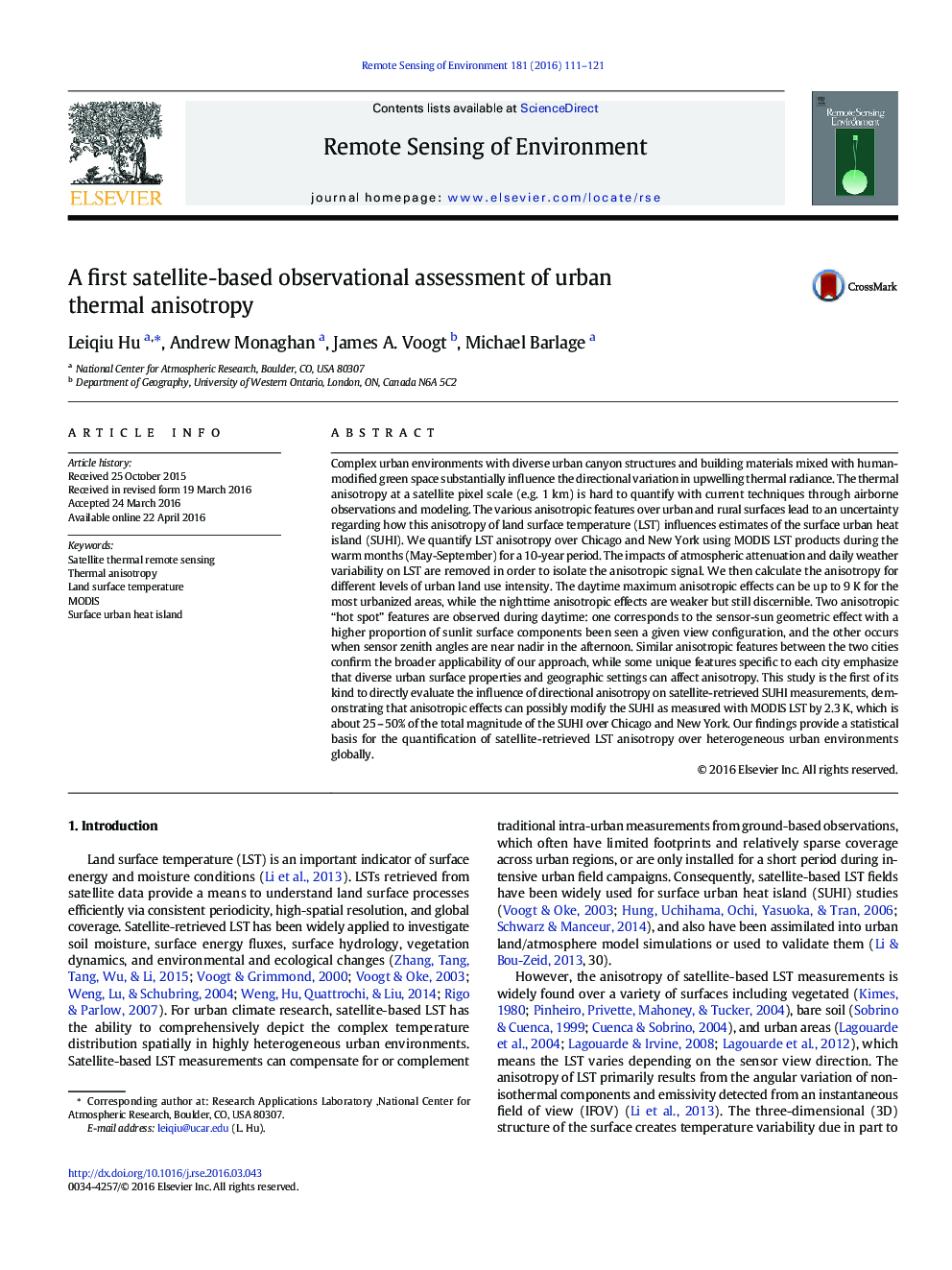| کد مقاله | کد نشریه | سال انتشار | مقاله انگلیسی | نسخه تمام متن |
|---|---|---|---|---|
| 6345295 | 1621219 | 2016 | 11 صفحه PDF | دانلود رایگان |
- We quantify LST anisotropy using MODIS LST in May-Sept of 2003-2012.
- A method is developed to isolate anisotropic effects on LST.
- Two anisotropic “hot-spot” features are observed during daytime.
- The daytime maximum anisotropic effects can be up to 9Â K in urban areas.
- Anisotropic effects can possibly modify the SUHI as measured with MODIS LST by 2.3Â K.
Complex urban environments with diverse urban canyon structures and building materials mixed with human-modified green space substantially influence the directional variation in upwelling thermal radiance. The thermal anisotropy at a satellite pixel scale (e.g. 1Â km) is hard to quantify with current techniques through airborne observations and modeling. The various anisotropic features over urban and rural surfaces lead to an uncertainty regarding how this anisotropy of land surface temperature (LST) influences estimates of the surface urban heat island (SUHI). We quantify LST anisotropy over Chicago and New York using MODIS LST products during the warm months (May-September) for a 10-year period. The impacts of atmospheric attenuation and daily weather variability on LST are removed in order to isolate the anisotropic signal. We then calculate the anisotropy for different levels of urban land use intensity. The daytime maximum anisotropic effects can be up to 9Â K for the most urbanized areas, while the nighttime anisotropic effects are weaker but still discernible. Two anisotropic “hot spot” features are observed during daytime: one corresponds to the sensor-sun geometric effect with a higher proportion of sunlit surface components been seen a given view configuration, and the other occurs when sensor zenith angles are near nadir in the afternoon. Similar anisotropic features between the two cities confirm the broader applicability of our approach, while some unique features specific to each city emphasize that diverse urban surface properties and geographic settings can affect anisotropy. This study is the first of its kind to directly evaluate the influence of directional anisotropy on satellite-retrieved SUHI measurements, demonstrating that anisotropic effects can possibly modify the SUHI as measured with MODIS LST by 2.3Â K, which is about 25Â -Â 50% of the total magnitude of the SUHI over Chicago and New York. Our findings provide a statistical basis for the quantification of satellite-retrieved LST anisotropy over heterogeneous urban environments globally.
Journal: Remote Sensing of Environment - Volume 181, August 2016, Pages 111-121
